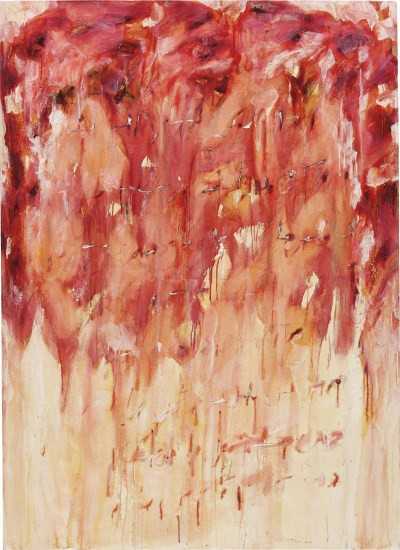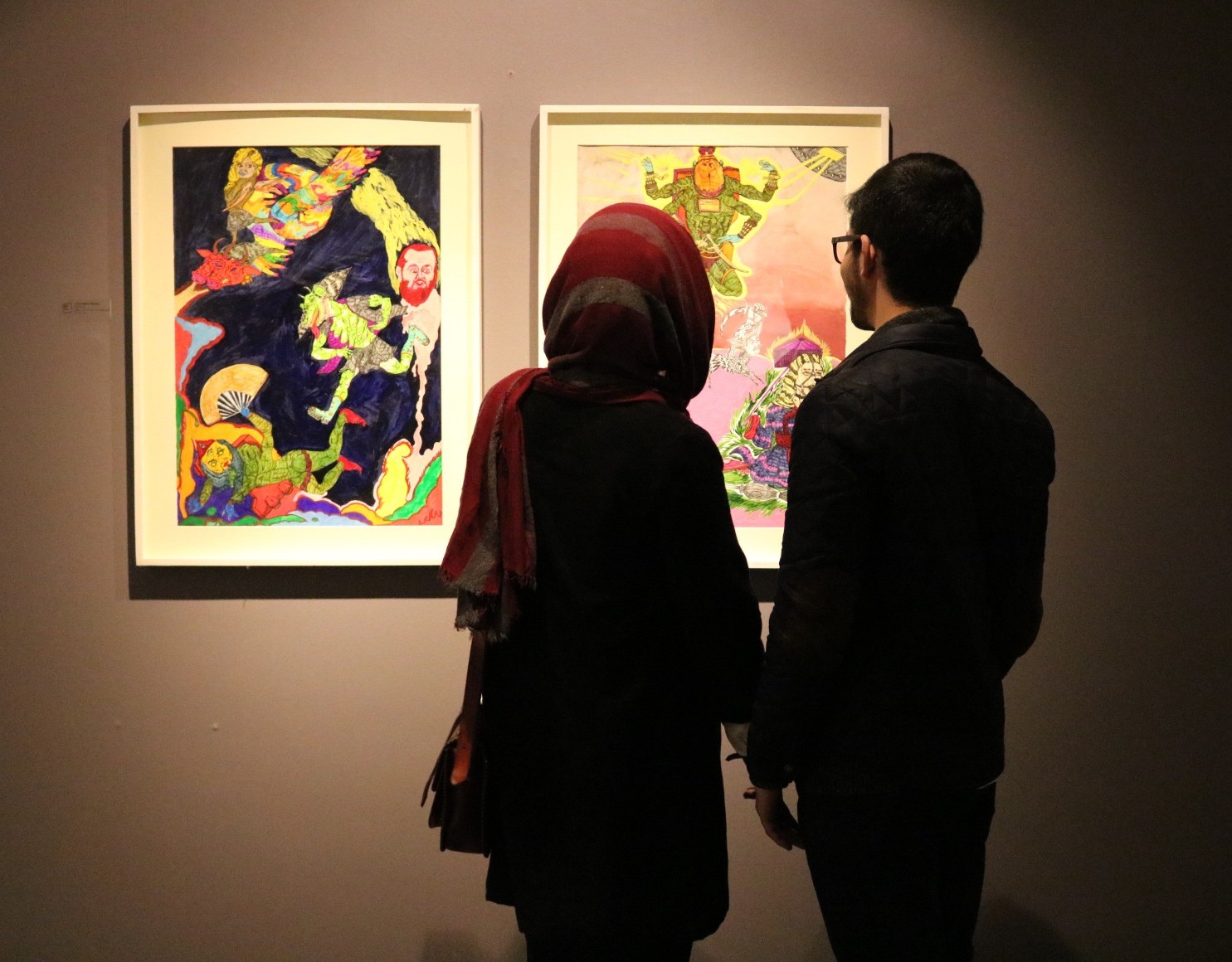About Azadeh Razaghdoost
Azadeh Razaghdoost, a contemporary painter, was born in Tehran. Razaghdoost's expressive paintings are suspended between representation and abstraction, between lyrical and violent expression, and red is the signature color of most of her paintings.
She started her art education at the Tehran Academy of Fine Arts and received a painting diploma in 1997. Then she went to Tehran University of Art and graduated in 2001 with a bachelor's degree in painting. She exhibited her artworks for the first time in 2000 in Tehran's Fereshteh Gallery and a group of other artists. Her first solo exhibition was held two years later with the title "Figurative in Disguise" at Atbin Gallery in Tehran. Razaghdoost's first international appearance was at the Dubai Art Fair in 2008. In the same year, her works appeared in a group exhibition at the Mall Galleries in London. These two exhibitions were a prelude to her international presence in numerous exhibitions in different countries of the world. In the following years, Razaghdoost exhibited his works as a group and individually in art centers in countries such as the United States, Japan, Germany, Switzerland, etc.
In naming her work courses, she often uses literary references to the poems of world-famous poets such as Charles Baudelaire and William Blake. For example, one of the artist's late paintings is called "In the Rose Storm," which is taken from the title of the poetry collection of the German poet Ingeborg Bachmann. The red color in her paintings is associated with blood. Her artworks, for example, the collection of "Letters," are similar to wounds, through which the veins and spots of red color jump out and spread throughout the canvas. This color has symbolic weight in her works. Depending on the topic, each red sign can become a symbol of love, wound, death, anger, etc. For example, we can mention her collection of paintings titled "Sick Rose." This collection has glimpses of Razaghdoost's movement toward form, and the red spots and surfaces take on a petal-like shape.
In Razaghdoost's later works, such as "Shadows of Eden," this form becomes more explicit. Plants and trees are the motifs of this group of her works. Although in these paintings, the leaves or branches and trunks of trees are still drawn abstractly, She uses spiritual colors to paint plants in a shadowy pink on the panel's surface.
In Razaghdoost's later works, such as "Shadows of Eden," this form becomes more explicit. Plants and trees are the motifs of this group of her works. Although in these paintings, the leaves or branches and trunks of trees are still drawn abstractly, She uses spiritual colors to paint plants in a shadowy pink on the panel's surface.
The Most Expensive Artwork
At Auctions
First Attendance
8 December 2016
# Attendance
9
# Artworks
9
Average Realized Price
8,637 USD
Average Min Estimate
5,497 USD
Average Max Estimate
7,666 USD
Sell-through Rate
77.778%
Average Growth of Artwork Worth
26.967%
Timeline
The 21st Tehran - Contemporary Iranian Art auction
11 October
The 18th Tehran Contemporary Art auction
12 December
Snow and Stork curated by Behzad Hatam exhibition
25 August
Tehran- 16th- Iranian contemporary art auction
1 July
The 14th Tehran- Contemporary Iranian Art auction
12 August
Resilience exhibition
31 July
Painting, Sculpture, Photography, Group Exhibition exhibition
26 June
MiddleEast London to Dubai Online Sale auction
18 June
Modern and Contemporary Middle Eastern Art auction
1 May
Foad Sharifi Print Makings exhibition
12 April
Azadeh Razaghdoost Selected Works exhibition
4 January
MODERN & CONTEMPORARY ART auction
27 November
The 6th Tehran- Contemporary Iranian Art auction
23 December
New Now auction
8 December
Recipe for a Poem exhibition
24 November
Shadows of Eden exhibition
3 January
Azadeh Razaghdoost Selected Works exhibition
21 October
Solo Exhibition Azadeh Razaghdoost exhibition
13 October
Azadeh Razaghdoost Painting Exhibition exhibition
14 April
Articles
Montakhab-e Nasl-E-No Annual Art Call; From Montakhab to Auctions 25 September 2023
The 13th Annual Montakhab-e Nasl-E-No started its work on July 21, 2023 with the presentation of 44 artists. Annual Montakhabe Nasl-E-No and other open calls in Iran, such as Khor Art Initiative, in the absence of art biennials in the Iranian art scene, consider their duty to discover new talents and monitor what is happening among new generation. Although the effects of these types...

